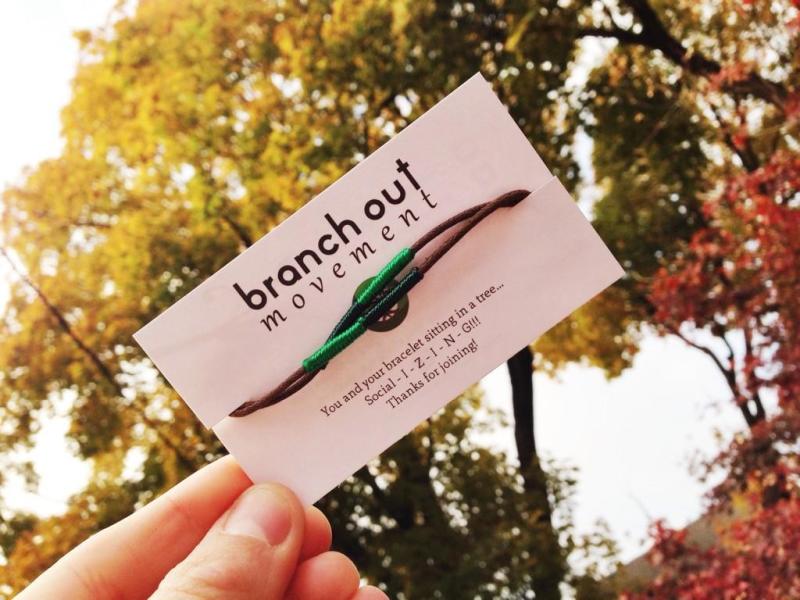

The Branch Out Movement promotes active and personal socializing through their memberships.
The rise of technology and social media has connected individuals across the barriers of time and space, but the current generation lost something valuable in this trend of online interaction. Founders of the Branch Out Movement, Cory Shea and Alan Liao, find that people in the U.S. are becoming lost in their social media, while letting live interactions with real people pass them by. In an interview, Liao and Shea shared the purpose of their Branch Out Movement and the hopes of impacting future generations for the better.
Liao and Shea met through a mutual friend, and shared the same vision of impacting the youth and encouraging others to put down their phones and talk to their neighbors. The two had "never met each other before, but the idea was lying dormant in their minds, most people can relate to the problem," explained Shea.
The Branch Out Movement, though relatively new, currently has at least 500 active members and has spread awareness well beyond that number. They can be followed through Twitter. "It's amazing that we met at a coffee shop and two to three months later we have this movement with solid growth," said Shea. Members of the movement sign up online and wear bracelets that serve as a reminder and commitment to being more open to the world around them. The bracelets, which are handmade and cost five dollars, are "not intrusive and blend in with the outfit, but still act as constant reminders to be more open and engaging," said Liao. Co-Founder Liao expressed his views towards the current trend of interactions between individuals.
"People are becoming lost in their social media and technology. They ask the same predictable questions such as "what do you do?' or "what school did you go to?' and answer with the same simple responses. We want to get people to take action, have different starting points in conversations and branch out to different topics," said Liao.
Members are given weekly tasks via email, and are challenged to approach strangers with random topics for conversation starting points. Accomplishing these tasks results in rewards on the Branch Out Account. Eventually, Branch Out has plans to create a mobile app to alert members real-time, so that they would be kept accountable and be able to check tasks and challenges right on their phones. The goal is to encourage live interactions, but also acts of kindness.
"It doesn't take much to look at your bracelet and offer to help someone with their bags," said Shea.
Though Liao and Shea encourage members to have direct and live conversations, they do not discourage the use of technology. "We are not anti-technology, but pro-human," said Liao. The Branch Out website encourages users to embrace technology, but also the world.
Most members reside in the North Eastern side of the United States including the New York, Pennsylvania, and New Jersey areas, but there is a growing community in California. Men and women make up an equal amount of the membership, though there are slightly more women. "People are into the overall concept," said Shea about the members.
The movement is just a few months old and has seen steady growth, stated Shea. "We broke out of our "friends and family' stage and all of our entering members are random individuals whom we have never met," he said. "Growth has been solid."
Lululemon Athletica, an athletic apparel company that specializes in yoga clothing, helped promote the Branch Out Movement in one of their campaigns this past holiday season. Calling it their "Give Presence" campaign, Lululemon worked with the Branch Out Movement to promote mindfulness in the community. This collaboration helped the Branch Out Movement start a growing community in California.
Though the movement is not affiliated with any specific religion, the founders hope to encourage compassion and love, "connection on a deeper level," said Shea.
"There is a tendency of overall empathy towards unfamiliar cultures. People who aren't familiar, or are ignorant of other cultures, have the opportunity to meet different types of people from different cultures and engage in different perspectives through the Branch Out Movement," said Liao.
Shea commented on possible efforts individuals can make to encourage this open behavior. "Talking is the starting point," said Shea. "Then one can begin to embody the principles of active and visual citizenship by doing small things to remind oneself of the commitment. For example, no phone during dinner, or refraining from using phones twenty minutes before going to bed and after waking up in order to have a time of personal reflection." The founders hope to collaborate with a local bar to host a "no phone" night.
The Branch Out Movement currently donates twenty percent of its proceeds to the Big Brothers Big Sisters organization, which promotes mentorship and wellbeing of youth. Shea was an active participant during his years at Penn State University as a student. During his involvement, Shea helped a youth with his studies and spent time interacting through activities such as football. The two groups share the same beliefs and goals for impacting the future generation in a positive way. Shea hopes to increase partnership with Big Brothers Big Sisters as the movement grows.
"Our long term goal is to impact the younger generation. We hope to release applications, or hold classes geared towards 9 to12 year olds that encourage active and visual citizenship," said Shea.
"It's hard to find out how to impact the younger generation, but we know parents have a huge impact. Children are growing up into the current culture of addiction to technology. The older generation, especially those in the movement, have to set an example for the younger generation," said Liao.
Both of the founders expressed their excitement to be involved in the movement. The Branch Out Movement is constantly evolving through feedback, they said. Though there may be no cure-all answer to the addiction to the Facebook Newsfeed, Liao and Shea hope that their members will impact their communities and be mindful of their commitment.



















